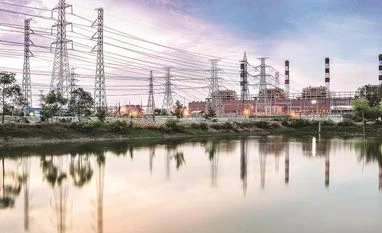The ministry of power has refused to acknowledge a report by the Central Electricity Authority (CEA), its technical arm, which estimates around 20 per cent lower growth in demand than forecast, sources said.
This is after the demand estimates were revised and calculated using another ‘econometric’ methodology to arrive at more accurate results.
Prepared in August 2019, the report was made available on the CEA website recently. But the ministry has not acknowledged it officially, sources said. The forecast is released by the ministry itself between March and May every year.
According to senior government sources, the ministry has decided not to accept the report as it does not want to make these numbers “their official stand”. A detailed questionnaire sent to the ministry did not elicit any response.
The new report, prepared by the CEA along with consultancy KPMG, has calculated India’s energy requirement to grow at 5.22 per cent from 2021-22 to 2026-27. This is at an optimistic GDP growth rate of 8 per cent during the same period.
The report has pegged India’s energy demand to be 1,477 billion units (BU) during 2021-22, and 1,905 BU in 2026-27. In an earlier report, which was also not accepted by the Centre, the energy demand was 1,566 BU and 2,047 BU for the same period. During April-December 2019, the energy demand of India was 951 BU.
Under the Electricity Act, 2003, the CEA is mandated to formulate short- and long-term demand forecast and advise on policy planning. Every year, the CEA takes out Electric Power Survey (EPS) depicting long-term electricity demand of India depending on prevalent economic situation in the country.
Last EPS in 2016 led to an infighting among departments as it predicted fall in demand. The CEA then pulled down the projection to 239 gigawatt (GW) by 2022 from earlier 289 GW. While the 2018 report brought it down to 225 GW in 2022, the revised report in 2019 now reduced it further to 202 GW (under optimistic scenario of GDP growth rate of 8 per cent).
At lower GDP growth rate of 6.5 per cent, the peak power demand is even lower at 195 GW. India’s current installed capacity is 367 GW. Advance estimates for FY20 that the GDP growth of the country will be 5 per cent.
Energy demand pertains to consumption of electricity while peak power demand is with regards to power generation.
There is no new thermal power generation being planned in the country, except for state-owned NTPC, which is constructing 20 GW of coal-based capacity. Besides, there is an envisaged 175 GW of renewable power capacity to be built by 2022.
Investment in India’s power sector is at a standstill. It is, instead, saddled with Rs 2 trillion worth of non-performing assets. At the same time, barely any state has signed long-term power purchase agreements in the past decade owing to financially sick status of their power distribution companies (discoms).
The National Infrastructure Plan of the BJP government has estimated Rs 1.5-trillion investment in renewable energy and Rs 1.1 trillion in thermal power by FY21.
“Downward revision in power demand is a clear indication of slowing economic growth and thereby will impact investment in the sector,” said an expert, who has not read the report. He, however, said the peak demand would also flatten in coming years because of increasing share of renewable projects as they have low plant load factor or operating ratio.
Clarifying on the data, the report said while the policies and schemes such as Make in India, dedicated freight corridor, and power for all are likely to dramatically increase electricity consumption, roof-top solar programme, Perform, Achieve and Trade (PAT), Bachat Lamp Yojana (BLY), and Star and Labelling programme may reduce demand for grid electricity.
“Other advanced technologies such as electric vehicles could alter demand. Also, with growing global concerns due to climate change, there has been increasing focus on gradually reducing dependence on fossil fuels and raising the share of renewable energy sources in the energy mix,” it said.
The report also cited the share of off-grid renewable such as solar pumps, which would decrease demand for grid electricity in the future. The Centre has announced an ambitious plan to replace all existing diesel-run agricultural pumps to solar-run. Announced two years back, the plan is yet to take off.
Unlock 30+ premium stories daily hand-picked by our editors, across devices on browser and app.
Pick your 5 favourite companies, get a daily email with all news updates on them.
Full access to our intuitive epaper - clip, save, share articles from any device; newspaper archives from 2006.
Preferential invites to Business Standard events.
Curated newsletters on markets, personal finance, policy & politics, start-ups, technology, and more.
)